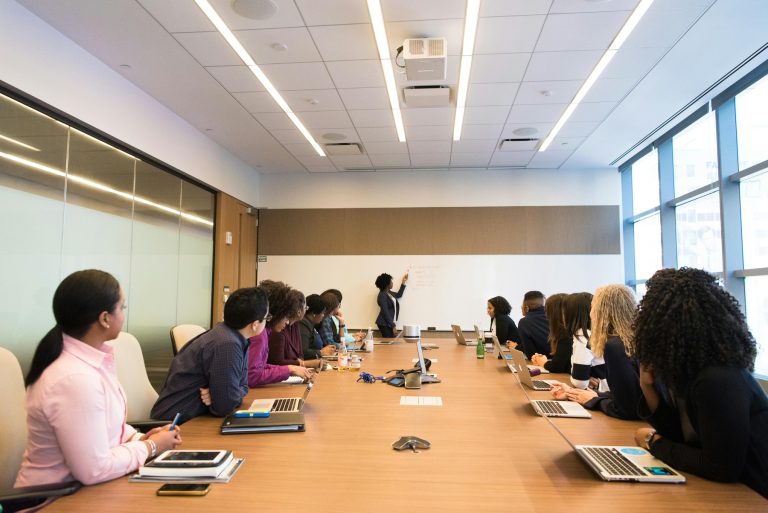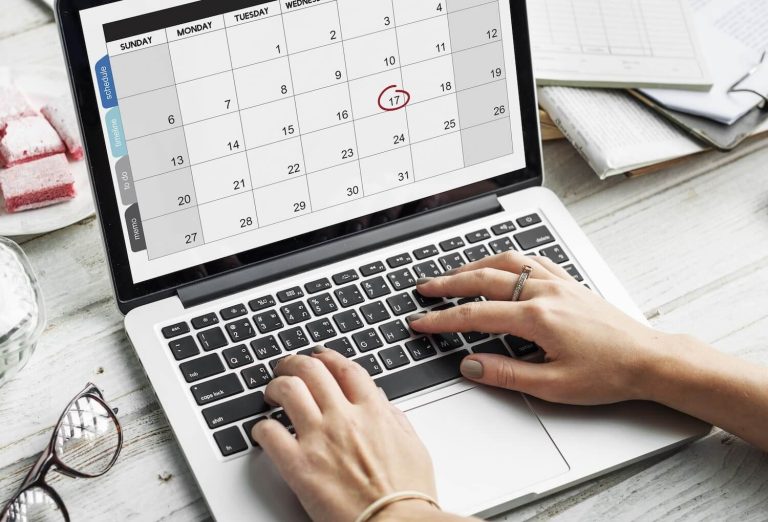How to Avoid Disorganization in Meetings Using Robert’s Rules of Order
You’ve sat through endless, chaotic meetings where discussions meander without resolution, costing your company precious time and resources. After using our scheduling system to set up your meeting, learn how to use Robert’s Rules of Order for meeting efficiency and productive meetings with clear outcomes.
How to Use Robert’s Rules of Order for Meeting Efficiency
Robert’s Rules of Order streamlines meetings by establishing clear agendas, respectful decorum, and motion precedence. Encourage participation through structured discussion and documenting decisions. Manage motions and debates efficiently to transform disorganized gatherings into productive decision-making sessions.

Do you want to turn your meetings from dreaded time-wasters into powerful tools for organizational progress? Take note of Robert’s Rules to keep your meetings organized and fair.
Understanding the Order of Business
Using a standard order of business helps meetings stay on track. Each item builds off the last, keeping things fair and making sure every voice is heard.
Reading and Approval of Minutes
This is the process of presenting the official record of the previous meeting for the assembly’s review and confirmation of accuracy. By starting each meeting with this, you keep everyone on the same page regarding past decisions and actions.
Reports of Officers, Boards, and Standing Committees
These reports provide updates on the ongoing work and responsibilities of various organizational components. Allocating specific time for these reports keeps members informed and allows for focused discussion or necessary action related to their activities.
Reports of Special Committees
These address the findings and recommendations of temporary groups formed for specific tasks. Scheduling these reports enables the assembly to address ad-hoc projects and decide on their outcomes or next steps.
Reports of Officers
Individual officers may provide updates relevant to their specific roles and responsibilities within the organization. This encourages direct communication from leadership while keeping everyone aware of key operational information.
Unfinished Business and General Orders
This section addresses items that were previously discussed yet not fully resolved, or are scheduled for consideration at this particular meeting. By revisiting these items, you prevent important matters from being overlooked.
Announcements and Adjournment
In the meeting’s final part, share important announcements with the assembly before the formal closing. Ending with adjournment provides a clear signal that the meeting has concluded, preventing lingering discussions or confusion.
Applying the Different Types of Motions
Different types of motions help keep meetings on track and make decisions clear. Each type has a specific purpose and follows certain rules to keep meetings fair and orderly.
| Type of Motion | Purpose | Example |
| Privileged Motions | Deal with urgent matters related to the rights and comfort of the assembly | Motion to Adjourn, Motion to Recess |
| Subsidiary Motions | Modify or dispose of the main motion | Motion to Amend, Motion to Refer to Committee |
| Main Motions | Introduce a new business for consideration | “I move that we…” |
| Incidental Motions | Address procedural questions related to the pending business | Point of Order, Parliamentary Inquiry |
Steps in Running a Meeting Using Robert’s Rules of Order
Running meetings with Robert’s Rules can be more efficient if you follow step-by-step procedures. These approaches help guide discussion, keep everyone engaged, and make sure that decisions are properly recorded and respected by the group.

1. Establish a Clear Agenda
You need to start with a clear agenda so people know what will be discussed. Agendas keep meetings focused and help prevent time being wasted on unrelated topics. A written list of items also helps participants prepare beforehand.
- List out each topic in order of importance.
- Share the agenda with attendees before the meeting.
- Allow time for members to add important items.
2. Maintain Decorum and Respect
Meetings run smoother when everyone follows the rules for respect and stays orderly. You should make sure only one person speaks at a time, and everyone listens to whoever has the floor. To help maintain decorum:
- Remind everyone of the rules at the start of the meeting.
- Address the remarks to the chair, not directly to another member.
- Use a gavel or a simple “point of order” to pause the meeting if things get disruptive.
3. Follow the Order of Precedence
Following the order of precedence for motions helps meetings stay on track. Not every discussion or proposal has the same priority. Using this structure, you know what types of motions can be discussed, changed, or voted on at any time.
- Memorize or keep a list of common motions and their order.
- Pause to check if a new motion “outranks” one that’s being discussed.
- Return to any postponed topics after higher-priority matters are settled.
4. Encourage Full Participation
To reach the best decisions, everyone should feel comfortable and safe when speaking. The chair can invite quieter members to share and set rules like time limits. Breaking discussions into rounds or asking for opinions can help everyone feel valued.
- Ask open-ended questions and invite members to raise their hands.
- Rotate who leads discussions for certain topics.
- Give each person a set amount of time to speak, so nobody dominates.
5. Document Decisions and Actions
Recording what happened in a meeting matters for legal, regulatory, or practical reasons. The secretary usually keeps minutes, noting major points, votes, and tasks assigned. This lets everyone review what happened and follow up on what they agreed to do.
- Write down the date, time, and location of the meeting.
- Record exactly what was decided or voted on, and who is responsible for each action.
- Have the group approve the minutes at the next meeting, then store them in a location where everyone can access them.

Related Questions
What Are Common Misconceptions About Robert’s Rules?
A common misconception about Robert’s Rules is that they make meetings overly formal and time-consuming. In reality, proper implementation streamlines discussions and accelerates decision-making processes.
Are Robert’s Rules of Order Mandatory?
Robert’s Rules of Order are not legally mandatory for most private organizations unless specifically required in their bylaws or governing documents. However, many professional associations, boards, and governmental bodies choose to implement them because they provide a proven framework for fair and efficient meetings.
What Is the Best Way to Adapt Robert’s Rules for Different Meetings?
The best way to adapt Robert’s Rules for different meetings is to scale the formality according to your group’s size and needs. Focus on the core principles rather than every procedural detail. For smaller teams, consider creating a simplified version that retains key elements, such as proper motion procedures and voting protocols.
Conclusion
With these rules, you give every participant a chance to speak while keeping the meeting on track and on time. Start implementing these time-tested procedures in your next meeting and watch as productivity soars while conflict diminishes.







